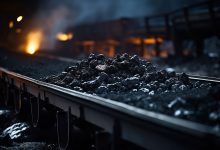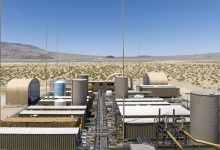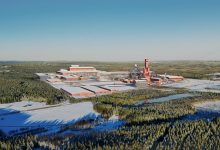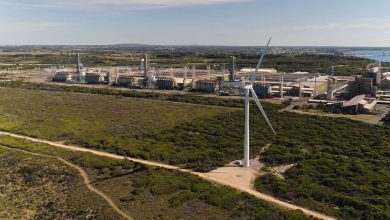Europe’s Largest Rare Earth Metals Deposit
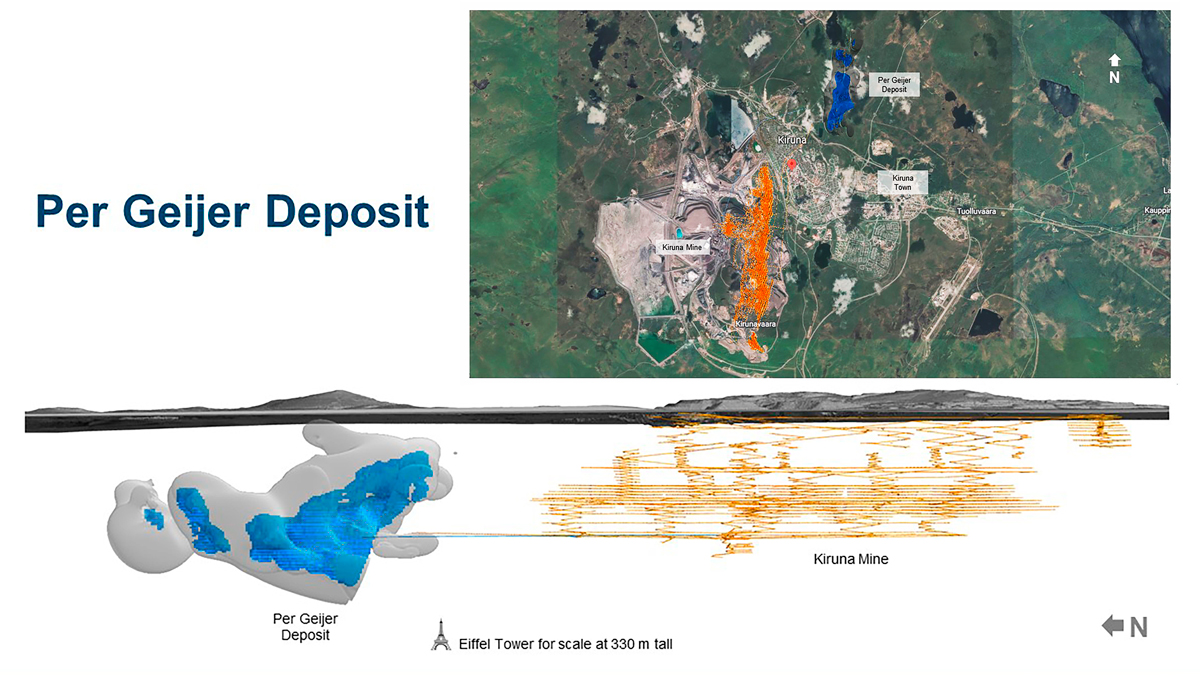
Swedish state-owned mining company LKAB has identified more than 1 million tonnes of rare earth oxides in the Kiruna area in the far north of the country, the largest rare earth metals deposit in Europe.
Rare earth minerals are essential for, among other applications, the manufacture of electric vehicles and wind turbines.
“This is good news, not only for LKAB, the region and the Swedish people, but also for Europe and the climate. This is the largest known deposit of rare earth elements in our part of the world, and it could become a significant building block for producing the critical raw materials that are absolutely crucial to enable the green transition. We face a supply problem. Without mines, there can be no electric vehicles,” says Jan Moström, President and Group CEO, LKAB.
No rare earth elements are currently mined in Europe, at the same time, demand is expected to increase dramatically as a result of electrification, which will lead to a global undersupply, and this at a time of increasing geopolitical tensions. According to the European Commission’s assessment, the demand for rare earth elements for electric cars and wind turbines, among others, is expected to increase more than fivefold by 2030. Today, Europe is also dependent on imports of these minerals, where China completely dominates the market, a factor which increases the vulnerability of European industry.
“Electrification, the EU’s self-sufficiency and independence from Russia and China will begin in the mine. We need to strengthen industrial value chains in Europe and create real opportunities for the electrification of our societies. Politics must give the industry the conditions to switch to green and fossil-free production. Here, the Swedish mining industry have a lot to offer. The need for minerals to carry out the transition is great, says Minister for Energy, Business and Industry, Ebba Busch.”
A long road to a mine
At the same time, the road to possible mining of the deposit is long, where the first step is an application for an exploitation concession for the Per Geijer deposit in order to be able to investigate it further at depth and investigate the conditions for mining. The plan is to be able to submit an application for an exploitation concession in 2023.
LKAB has already started to prepare a drift, several kilometres long, at a depth of approximately 700 metres in the existing Kiruna mine towards the new deposit in order to be able to investigate it at depth and in detail.
“We are already investing heavily to move forward, and we expect that it will take several years to investigate the deposit and the conditions for profitably and sustainably mining it. We are humbled by the challenges surrounding land use and impacts that exist to develop this into a mine and that will need to be analysed to see how to avoid, minimize and compensate for it. Only then can we proceed with an environmental review application and apply for a permit,” says Jan Moström.
“If we look at how other permit processes have worked within our industry, it will be at least 10-15 years before we can actually begin mining and deliver raw materials to the market. And then we are talking about Kiruna, where LKAB has been mining ore for more than 130 years. Here, the European Commission’s focus on this issue, to secure access to critical materials, and the Critical Raw Materials Act the Commission is now working on, is decisive. We must change the permit processes to ensure increased mining of this type of raw material in Europe. Access is today a crucial risk factor for both the competitiveness of European industry and the climate transition,” adds Jan Moström.
Per Geijer, potential to become Europe’s most important mine for critical raw materials
Promising results from LKAB’s ongoing exploration in Kiruna and Gällivare were presented last spring. The deposit Per Geijer is in close proximity to existing operations in Kiruna. More extensive studies show an increase from 400 million tonnes of mineral resources with high iron content to over 500 million tonnes, and that the Per Geijer deposit contains up to seven times the grade of phosphorus as the orebodies that LKAB mines in Kiruna today. Phosphorus is one of three nutrients in mineral fertilisers necessary for food production and is on the EU’s list of critical minerals.
LKAB reports a Mineral Resource and further extensive studies in Per Geijer of assets amounting to more than one million tonnes of rare earth metals in the form of Rare Earth Oxides, which are used to produce Rare Earth Elements (REE). This would be sufficient to meet a large part of the EU’s future demand for manufacturing the permanent magnets that are needed for electric motors in, among other things, electric vehicles, and wind power turbines.
The results are presented in accordance with the reporting standard PERC 2021, which is the prevailing international standard for LKAB.
The rare earth elements in Per Geijer occur together with phosphorus in the mineral apatite, in what is mainly an iron ore deposit, and which may therefore be produced as by-products. It also creates completely different opportunities for possible competitive mining.
“LKAB is already planning a circular industrial park in Luleå with new technology for the extraction and processing of phosphorus, rare earth elements and fluorine based on today’s existing mining production. There, instead of landfilling the material, it can be used to create new, sustainable products. A production start is planned for 2027,” says Leif Boström, Senior Vice President, Business Area Special Products, LKAB.
LKAB and critical raw materials
LKAB produces 80 percent of Europe’s iron ore and, backed by a strategy for producing sponge iron using hydrogen technology, is leading the transformation of the iron and steel industry. Since the 1980s LKAB has also been active in the industrial minerals sector via its Special Products division, which produces and processes more than 30 minerals.
Since the1960s LKAB has reduced its carbon dioxide emissions per tonne finished product by 84 percent and invests heavily in research and development to further develop sustainable mining from a world-leading position. Priority areas for further strengthening our sustainability performance are methods for creating added biological value, establishment of circular business models and continued efforts and measures towards increased climate efficiency.
Phosphorus is one of three essential nutrients added to mineral fertilisers used in agriculture. Approximately half of all world’s agricultural production is dependent on this. Europe is 90% dependent on imports of phosphorus and Russia has accounted for a significant share of phosphorus production.
Since Russia’s invasion of Ukraine, the supply and prices of mineral fertiliser have become a major problem, which may result in high food prices globally and food shortages in poor countries. Phosphorus is included on the EU’s list of critical raw materials. All these raw materials are vital for Europe’s industry and economy, we are import-dependent on them and there is a great risk for disruptions in supply related, for example, to geopolitical risk factors.
Rare earth elements are also included on the list of critical raw materials, none of which are mined in Europe. China dominates both mining and processing, while Europe is largely dependent on rare earth elements for manufacturing the permanent magnets which are necessary for electric vehicles and wind power turbines that are essential for the green transition.
The EU is today virtually import-dependent when it comes to permanent magnets with rare earth elements, more than 90 percent of which are produced in China. As of 2035, sales of petrol and diesel vehicles will be prohibited. An electric vehicle requires six times more minerals that a conventional automobile. With Per Geijer, LKAB has great potential to contribute to increasing the degree of European Union self-sufficiency and maintaining Europe’s competitive advantage within the vehicle industry.
The powerful permanent magnets used in electric vehicles contain the rare earth elements neodymium and praseodymium; from 0.5 to a couple of kilos per vehicle, depending on the size of the motor and permanent magnet.
Extraction and processing of phosphorus, rare earth elements and fluorine are part of LKAB’s ReeMAP project. Here, LKAB is developing technology for extracting phosphorus and rare earth elements as by-products from today’s iron ore production and is planning a circular industrial park in Luleå. At this processing stage LKAB plans to produce a concentrate that must subsequently be separated.
To meet the need both for extraction of raw materials and to increase Europe’s processing capacity LKAB has, as principal owner, recently entered collaboration with Norwegian REEtec. They have developed an innovative and sustainable technology for separation of rare earth elements that can compete with China’s dominating production of these materials.
About LKAB
LKAB is an international mining and minerals group that offers sustainable iron ore, minerals, and special products. They are committed to developing carbon-free processes and products by 2045, leading the transformation of the iron and steel industry. Since 1890 LKAB has developed through unique innovations and technological solutions and are driven forward by more than 4,500 employees in 12 countries. In 2021, the LKAB group had sales of about SEK 49 billion.


